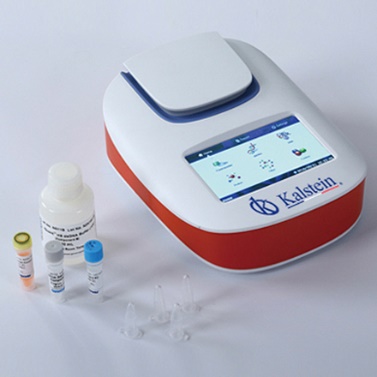A fluorometer is a piece of equipment that allows the analysis, identification and quantification of chemical substances with molecules capable of presenting fluorescence, using the technique of fluorescence spectrophotometry or fluorometry. We can say that this equipment is a special optical device used in laboratories, capable of measuring the fluorescent quality of biological or mineral samples.
Fluorescence occurs when a substance emits visible light and glows after it has been exposed to some type of radiation, either alone or high-energy radiation such as visible light X-rays. This property is similar to phosphorescence, which is the emission of low-temperature light from an accumulation of energy or radiation from a substance. Fluorescence analysis is an analytical method related to spectrophotometry, since many molecules are capable of emitting this energy as radiation, thereby returning to the ground state, the emitted radiation is known as fluorescence.
The typical fluorescence mechanism involves three sequential steps, respectively called absorption (1), non-radiative dissipation (2), and emission (3). The phenomenon of fluorescence has many practical applications, among which are for example analysis in mineralogy, gemology, chemical sensors (fluorescent spectroscopy), pigments and inks, biological detectors and fluorescent lamps.
Factors that affect fluorescence
The fluorescent emission observed in a certain species is conditioned by the molecular structure of the substance itself and by other factors dependent on the environment in which it works, such as rigidity, influence of the solvent, pH and temperature.
What are the applications of fluorometers
The detection of a fluorometer is based on the fundamental universal principles of fluorescence, there are several unique applications and adaptations for these devices. One of the main uses of fluorometers is that they are used to measure the fluorescence of chlorophyll and thus investigate the physiology of plants, although they can currently have many applications.
These kits are also used in biochemical, medical, chemical and research analysis of organic compounds. Currently one of the most recent applications of fluorometry is the quantification of nucleic acids, through fluorometers, which measure concentrations of DNA, RNA, and proteins with high precision and sensitivity.
It is based on the use of fluorophores that are specifically intercalated between the molecules of interest, thus minimizing the effects of pollutants. The precision of the measurements even at low concentrations, which makes this equipment an ideal tool for applications such as real-time PCR and massive sequencing.
In this way we can mention among the specific applications of a fluorometer, the following studies:
- Protein dynamics
- Quantitative analysis
- Cell membrane studies
- Enzyme kinetics
- Carbon nanostructures
- Characterization of fluorescent probes
- Short-term phosphorescence measurements
- Thermal stability measurements
How is a fluorometer composed?
A fluorometer has several key components. It has an input source for ordinary visible light, and this light passes through an excitation filter that allows only specific wavelengths to impact the sample cell of the material under study. When this material, whether organic or inorganic, is bombarded by these controlled wavelengths of light, they emit fluorescence, emitting its own characteristic light that then passes through an emission filter. The emissions are read by a light detector that produces a reading for the observer to know how the sample is reacting and what its content is.
At Kalstein we are MANUFACTURERS and we offer you an excellent fluorometer designed with the highest technology and quality, at the best PRICE. This is a dual channel fluorometer and provides highly sensitive fluorescent detection to quantify nucleic acids and proteins. That is why we invite you to take a look at the Products menu. HERE

